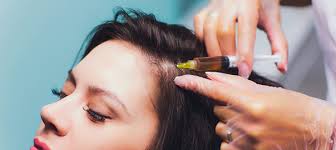
PRP Therapy
It’s called Platelet-Rich Plasma (PRP) Therapy, and it utilizes platelets from the patient’s own blood to rejuvenate hair follicles.
How does PRP Work?
Human blood contains mesenchymal stem cells, and autologous blood products that contain essential and specific growth factors that assist in tissue regeneration and healing. Published medical literature from Europe and the United States confirms the safety and use of PRP therapy. imagesIt has been used a medial adjunct therapy.for over two decades for skin and wound healing. PRP therapy has established itself to be effective as a medical treatment modality in the specialty fields of oral surgery, neurosurgery, plastic and cosmetic surgery, sports medicine and orthopedics. It has been used extensively in these specialties for the last twenty years with generally positive outcomes and success. In the field of hair restoration, evidence supports PRP therapy as a promising treatment option to promote hair growth. No claim can be made of its efficacy. While PRP is in the early stages of scientific research in hair restoration, PRP is not meant to replace current FDA approved therapies such as DHT blockers and Minoxidil. But it is a promising non-surgical therapeutic option for those patients with hair loss.
What Conditions are Treated with PRP? Is It Effective?
Research studies are currently being conducted to evaluate the effectiveness of PRP treatment. At this time, the results of these studies are inconclusive because the effectiveness of PRP therapy can vary.
Factors that can influence the effectiveness of PRP treatment include:
- The area of the baldness being treated.
- The overall health of the patient.
- Whether the baldness is due to scarring or nonscarring Alopecia.


